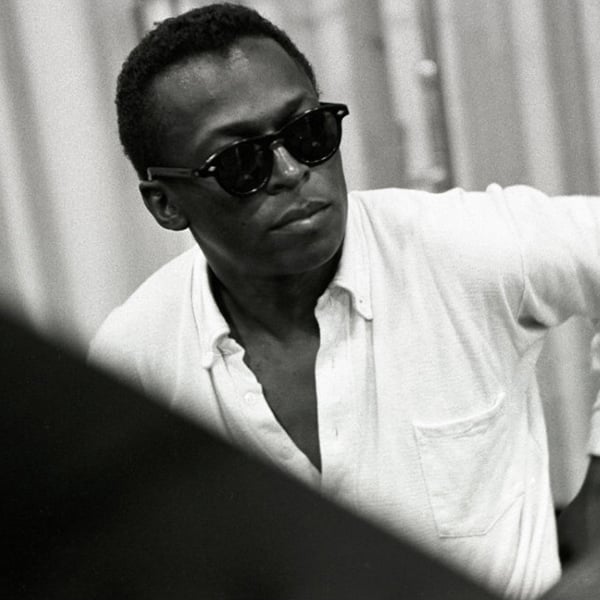
By 1974, when the double albums Big Fun and Get Up With It were released, Miles was not visiting the studio as often as he had at the start of the decade. For Columbia Records, it was time to take stock of what had just happened, to fill in a few gaps of how the music had changed during the turbo-charged period that began in 1960—month by month, session by session, all in a rapid, electronic blur.
Released in April 1974, Big Fun filled in a few of the gaps with tracks recorded between 1969 and 1972. Standout performances from November 1969, recorded on the heels of the Bitches Brew sessions, reveal how early Miles began to incorporate Indian instruments—sitar, tabla—into his music: “Great Expectations/Orange Lady,” “The Little Blue Frog” (Miles’s muted trumpet adding a delicate, retro touch), and the soulful and deeply lyrical “Yaphet” were wonderful rescues.
Recorded just a few months later at the start of 1970, “Recollections” and “Lonely Fire” are down-tempo, extended studies in shadowy feel and texture, atmospheric electric keyboards and restrained solos. “Go Ahead John” is a lengthy, hard-driving jam from the Jack Johnson sessions; John McLaughlin’s brash guitar up front and center. “Ife,” from the summer of 1972 and named for the daughter of percussionist Mtume, is an Afro-futurist mini-suite, flows with a rich, suite-like narrative of rhythm and space.
Get Up With It followed in late November 1974, with orphaned tracks from studio dates between 1970 and 1974—a powerful panoply of lengthy modal workouts and music resonating with exotic instrumentation, electric organ swells and rock guitar energy—with moments of moody melodicism.
“Honky Tonk” from early 1970 is another 4/4 blues strut with Miles, McLaughlin and Cobham leading the charge. “Red China Blues,” from 1972, is a straight-ahead electric blues, replete with distorted harmonica—courtesy of Lester Chambers of the Chambers Brothers—and a brass section arrangement chugging along. “Rated X” is from the same year, a trumpet-less, dread-filled drone from the same year, a shaggy-dog story told through discordant chords: Miles playing organ alongside Cedric Wilson on electric piano, building in intensity until it finally finds light at the end.
“That music was about life—It dealt with cleansing. It dealt with rising and falling It was extremely cerebral, but it was earthy at the same time.” So guitarist Pete Cosey, who figures heavily in much of the music on Get Up With It, once described the music of those years.
Cosey’s effects-driven, noise guitar adds an intriguing, freewheeling edge to the tracks from 1974—along with rhythmic ideas from guitarist Reggie Lucas, bassist Michael Henderson, drummer Al Foster, percussionist Mtume. There’s the opening, full LP-side jam “He Loved Him Madly” (a tribute to Duke Ellington who had recently passed), “Mtume,” “Billy Preston,” and “Maiysha”—the last blessed with an exceedingly lyrical electric trumpet statement by Miles, reminiscent of the melody and message of “I Wish You Love.” It’s a moment that proves even at the height of the mid-1970s electric storm, the tender sentiment and vulnerability of the mid-1950s endured in Miles’ sensibility.

















